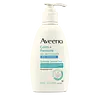What's inside
What's inside
 Key Ingredients
Key Ingredients

No key ingredients
 Benefits
Benefits

 Concerns
Concerns

 Ingredients Side-by-side
Ingredients Side-by-side

Water
Skin ConditioningGlycerin
HumectantIsopropyl Palmitate
EmollientButyrospermum Parkii Butter
Skin ConditioningVegetable Oil
Skin ConditioningAvena Sativa Kernel Oil
Skin ConditioningAvena Sativa Kernel Extract
AbrasiveAvena Sativa Kernel Flour
AbrasiveAloe Barbadensis Leaf Extract
EmollientPanthenol
Skin ConditioningEuphorbia Cerifera Wax
Caprylyl Glycol
EmollientHydrogenated Vegetable Oil
EmollientSorbitan Olivate
EmulsifyingCetearyl Olivate
Sodium Hydroxide
BufferingCarbomer
Emulsion StabilisingCetyl Alcohol
EmollientPhenoxyethanol
PreservativeWater, Glycerin, Isopropyl Palmitate, Butyrospermum Parkii Butter, Vegetable Oil, Avena Sativa Kernel Oil, Avena Sativa Kernel Extract, Avena Sativa Kernel Flour, Aloe Barbadensis Leaf Extract, Panthenol, Euphorbia Cerifera Wax, Caprylyl Glycol, Hydrogenated Vegetable Oil, Sorbitan Olivate, Cetearyl Olivate, Sodium Hydroxide, Carbomer, Cetyl Alcohol, Phenoxyethanol
Water
Skin ConditioningGlycerin
HumectantDimethicone
EmollientStearic Acid
CleansingCaprylic/Capric Triglyceride
MaskingGlycol Stearate
EmollientPEG-100 Stearate
Petrolatum
EmollientGlyceryl Stearate
EmollientCaprylyl Glycol
EmollientPhenoxyethanol
PreservativeCetyl Alcohol
EmollientAcrylates/C10-30 Alkyl Acrylate Crosspolymer
Emulsion StabilisingTriethanolamine
BufferingHelianthus Annuus Seed Oil
EmollientTriolein
Skin ConditioningDisodium EDTA
Stearamide Amp
Carbomer
Emulsion StabilisingCI 77891
Cosmetic ColorantWater, Glycerin, Dimethicone, Stearic Acid, Caprylic/Capric Triglyceride, Glycol Stearate, PEG-100 Stearate, Petrolatum, Glyceryl Stearate, Caprylyl Glycol, Phenoxyethanol, Cetyl Alcohol, Acrylates/C10-30 Alkyl Acrylate Crosspolymer, Triethanolamine, Helianthus Annuus Seed Oil, Triolein, Disodium EDTA, Stearamide Amp, Carbomer, CI 77891
Ingredients Explained
These ingredients are found in both products.
Ingredients higher up in an ingredient list are typically present in a larger amount.
Caprylyl Glycol is a humectant and emollient, meaning it attracts and preserves moisture.
It is a common ingredient in many products, especially those designed to hydrate skin. The primary benefits are retaining moisture, skin softening, and promoting a healthy skin barrier.
Though Caprylyl Glycol is an alcohol derived from fatty acids, it is not the kind that can dry out skin.
This ingredient is also used as a preservative to extend the life of products. It has slight antimicrobial properties.
Learn more about Caprylyl GlycolCarbomer is a polymer of acrylic acid. Its main role is to create a gel consistency.
A high amount of carbomer can cause pilling or balling up of products. Don't worry, most products contain 1% or less of carbomer.
Cetyl Alcohol is a fatty alcohol. Fatty Alcohols are most often used as an emollient or to thicken a product.
Its main roles are:
Though it has "alcohol" in the name, it is not related to denatured alcohol or ethyl alcohol.
The FDA allows products labeled "alcohol-free" to have fatty alcohols.
Learn more about Cetyl AlcoholGlycerin is already naturally found in your skin. It helps moisturize and protect your skin.
A study from 2016 found glycerin to be more effective as a humectant than AHAs and hyaluronic acid.
As a humectant, it helps the skin stay hydrated by pulling moisture to your skin. The low molecular weight of glycerin allows it to pull moisture into the deeper layers of your skin.
Hydrated skin improves your skin barrier; Your skin barrier helps protect against irritants and bacteria.
Glycerin has also been found to have antimicrobial and antiviral properties. Due to these properties, glycerin is often used in wound and burn treatments.
In cosmetics, glycerin is usually derived from plants such as soybean or palm. However, it can also be sourced from animals, such as tallow or animal fat.
This ingredient is organic, colorless, odorless, and non-toxic.
Glycerin is the name for this ingredient in American English. British English uses Glycerol/Glycerine.
Learn more about GlycerinPhenoxyethanol is a preservative that has germicide, antimicrobial, and aromatic properties. Studies show that phenoxyethanol can prevent microbial growth. By itself, it has a scent that is similar to that of a rose.
It's often used in formulations along with Caprylyl Glycol to preserve the shelf life of products.
Water. It's the most common cosmetic ingredient of all. You'll usually see it at the top of ingredient lists, meaning that it makes up the largest part of the product.
So why is it so popular? Water most often acts as a solvent - this means that it helps dissolve other ingredients into the formulation.
You'll also recognize water as that liquid we all need to stay alive. If you see this, drink a glass of water. Stay hydrated!
Learn more about Water